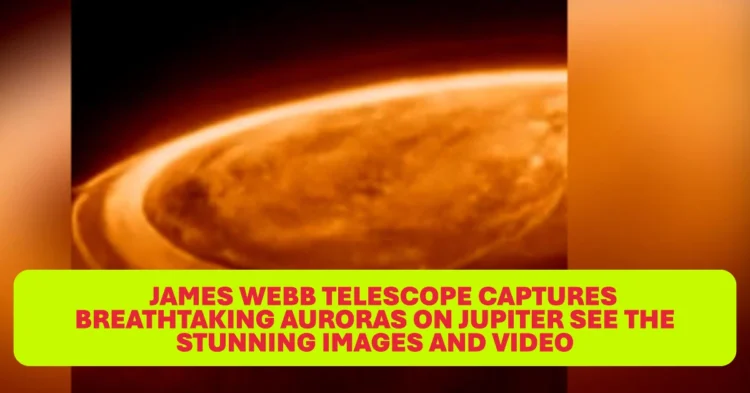In a dazzling display of cosmic beauty, NASA’s James Webb Space Telescope has captured stunning video footage of auroras on Jupiter that make Earth’s northern lights look like mere flickers by comparison. These radiant shows, recorded on December 25, 2023, are hundreds of times more powerful than any aurora seen on Earth, according to a press release from NASA.
“Jupiter’s auroras are like the ‘Northern Lights, but way bigger!'” the Webb Telescope team posted on X.
The celestial spectacle was a cosmic Christmas gift for astronomers, with the telescope catching the fiery dance of lights in Jupiter’s atmosphere. These observations are now providing researchers with rare insight into the gas giant’s intense magnetic environment.
Table of Contents
The Christmas Day Discovery: Lights That Pop and Fizz
Jonathan Nichols, a space scientist from the University of Leicester, described the observation as an unforgettable moment.
“What a Christmas present it was – it just blew me away!” Nichols said. “We wanted to see how quickly the auroras change, expecting them to fade in and out slowly… Instead, we observed the whole auroral region fizzing and popping with light, sometimes varying by the second.”
This fast-paced, dynamic behavior was captured in video form, revealing an energetic dance of light more intense than researchers ever anticipated.
What Causes Auroras on Earth?
Before diving into the unique nature of Jupiter’s auroras, it’s worth understanding how they occur on our own planet.
Auroras on Earth happen when energetic particles—mainly electrons from the sun—collide with gases in the upper atmosphere near the magnetic poles. These charged particles excite atmospheric gases, creating the colorful glows we recognize as the Northern and Southern Lights. Depending on the type of gas, the auroras can appear red, green, or purple.
Why Jupiter’s Auroras Are So Much More Powerful
Jupiter’s auroras are a different beast entirely—larger, brighter, and much more energetic. According to NASA, several unique factors make this possible:
Multiple Energy Sources Fuel the Show
While Earth’s auroras are mainly powered by the sun’s solar wind, Jupiter’s magnetic field collects charged particles from multiple sources:
- Solar winds
- The volcanic moon Io, which spews particles into space
- Energetic particles trapped in Jupiter’s own magnetosphere
A Supercharged Magnetic Field
Jupiter boasts the most powerful magnetic field of any planet in our solar system. Once it captures these charged particles, it accelerates them to extreme speeds.
These high-speed particles then slam into Jupiter’s upper atmosphere, causing gas molecules to become highly excited and glow intensely. This results in auroras that are hundreds of times brighter and more dramatic than anything seen on Earth.
What the James Webb Telescope Brings to the Table
Thanks to the extreme sensitivity of the James Webb Space Telescope, astronomers now have an unprecedented view of these extraordinary auroras. The telescope’s ability to detect infrared light lets it capture atmospheric phenomena on a scale and detail previously unimaginable.
NASA says the observations are allowing scientists to analyze Jupiter’s magnetosphere, helping us better understand how massive planets interact with space weather and surrounding particles.
Why This Matters: Beyond the Beauty
While the visual spectacle is breathtaking, these observations have real scientific significance. Studying Jupiter’s auroras offers insights into how magnetic fields operate on massive planets—and even how similar processes might function on exoplanets or stars. Understanding these phenomena can also shed light on the broader dynamics of our solar system.
Final Thoughts
Jupiter’s auroras are more than just a light show—they’re a window into powerful magnetic forces and planetary processes on a grand scale. Thanks to NASA’s James Webb Space Telescope, we now have a clearer, more vivid view of one of the solar system’s most energetic events. And for scientists and stargazers alike, it’s nothing short of cosmic magic.

